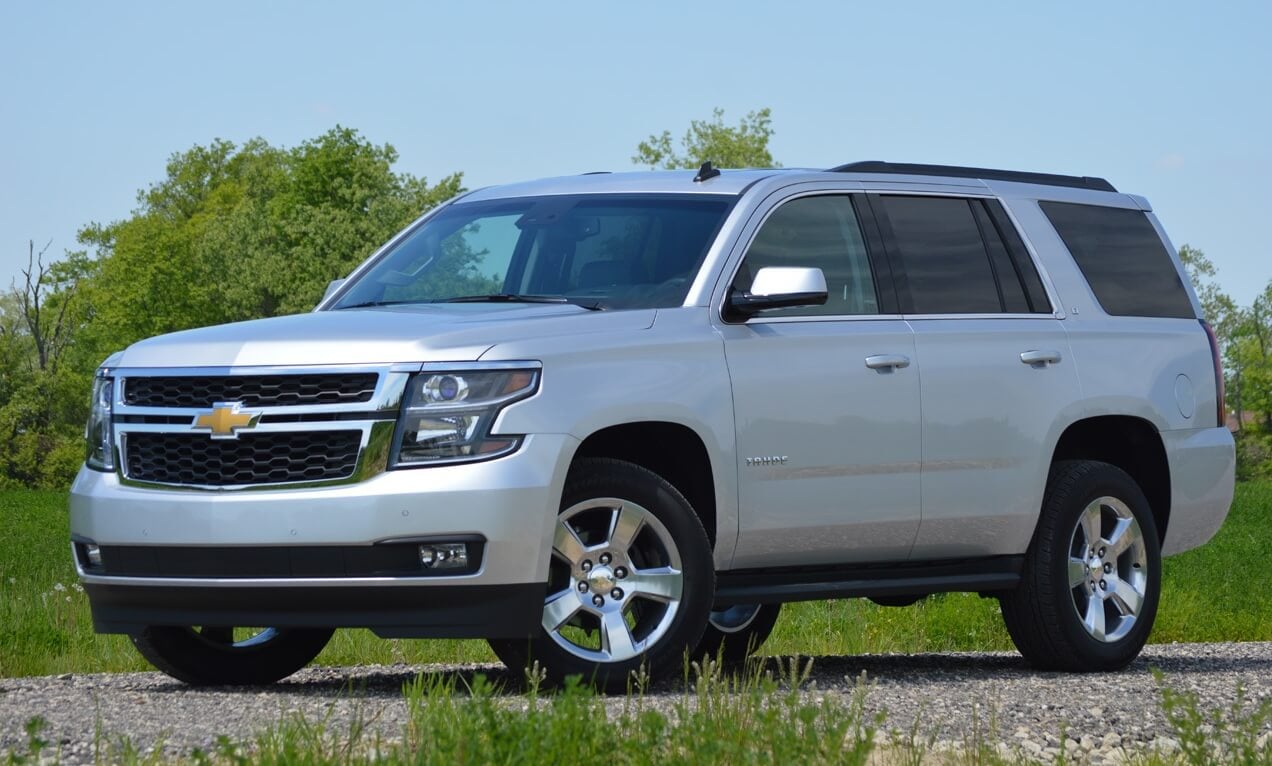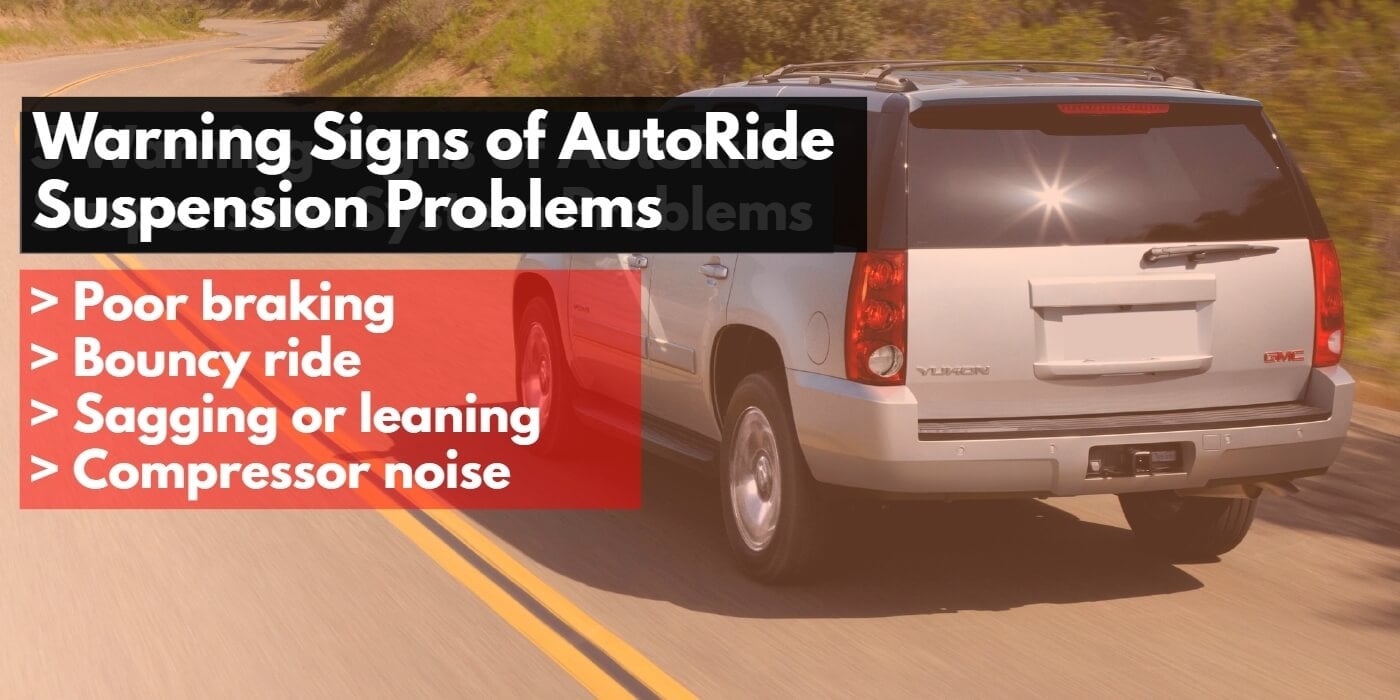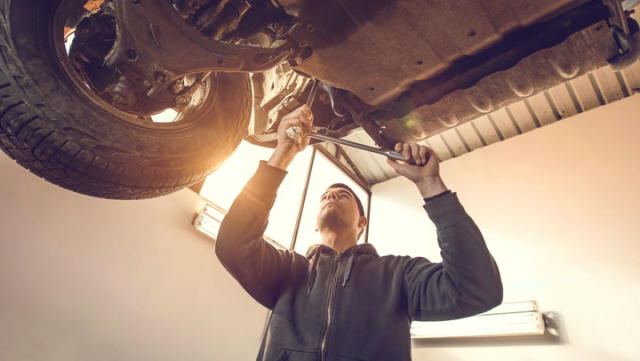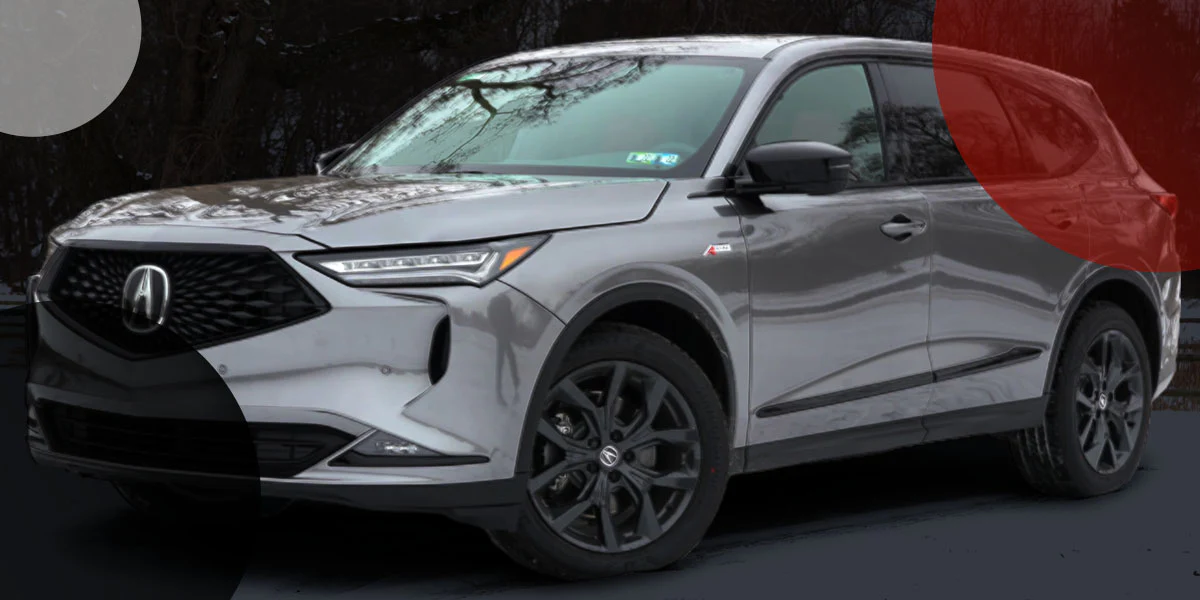Cars, trucks, and vans that feature AutoRide suspension offer an incredibly comfortable and responsive driving experience – until they don’t. While AutoRide load-leveling systems are great at providing a smooth ride for drivers when they’re operating as they’re supposed to, they’re also notorious for breaking down. When they do, the vehicles they’re installed on can become uncomfortable and even unsafe to drive.
In this article, we take an in-depth look at AutoRide suspensions, the problems they tend to have, and how to diagnose those problems. We also compare a few ways you can fix your suspension issues and outline the best of those methods.
What is AutoRide Suspension?
AutoRide is GM’s branded name for one of its active suspension systems. It is a pneumatic air suspension system that uses compressed air and electronic controls to support the vehicle and provide adaptive damping. While GM included AutoRide on a variety of its vehicles, its most popular use was on full-size SUVs and pickups such as the Chevrolet Tahoe, Chevrolet Avalanche, and Cadillac Escalade made between 2000 and 2014.
How Does AutoRide Work?
AutoRide works by adjusting the air pressure in pneumatic springs to account for changes in road surfaces and driving behavior and deliver a smooth ride for people inside the vehicle. While this adaptive suspension process happens practically instantly and constantly while a vehicle is in motion, there are several steps to it:
- Sensors take constant readings. AutoRide uses ride height sensors mounted at each wheel (sometimes only on the rear wheels) that take a constant mechanical reading of the vehicle body at that corner relative to the road. These readings are sent to an electronic control module (ECM) for processing.
- The ECM analyzes the readings. With the information from the ride height sensors, the ECM determines which air shocks need adjusting. Depending on the situation, one air spring may need to provide more resistance, while another may need to provide more give.
- The ECM tells other components what to do. After determining what adjustments need to be made, the ECM instructs the suspension air compressor on how much air it needs to generate for the system. At the same time, it also instructs an electronic manifold on where it needs to send air and how much it needs to send.
- Air travels through the system. The compressor sends the air it generates to a reserve tank as the manifold releases air from the tank to inflate the springs. This air travels through delivery lines and into the springs as needed to adjust the pressure and resistance.
- The cycle continues. This sequence happens continuously as long as the vehicle is moving. When working properly, most drivers don’t even know that it is happening.
Common AutoRide Problems
Like all air suspension systems, AutoRide is complex and involves a lot of components. That means that there are countless things that can go wrong with it. However, some problems are more common to AutoRide systems than others. These include:
-
Air leaks: Leaks within the AutoRide can happen in dozens of points throughout the system. When there is a leak in the system, it can malfunction in numerous ways.
-
Faulty compressor: As a mechanical component with moving parts, the compressor in an AutoRide system is prone to wearing out. When it does, it won’t be able to produce pressurized air in the way it’s designed to.
-
ECM failure: Another common AutoRide issue is a failing ECM. This can happen either due to software errors or because of physical damage to components.
-
Sensor failure: The ride height sensors in an AutoRide system are another common point of failure due to their use of moving parts and electronic components.
How to Identify and Diagnose AutoRide Suspension Issues
With so many things that can go wrong, finding the source of AutoRide issues can be difficult – even for an experienced mechanic. Many vehicles with AutoRide systems have a suspension warning light on the instrument cluster that illuminates when it detects a problem. You may be able to get a more specific diagnosis with an OBD II scanner.
It’s also common for multiple issues to happen around the same time. While you or a mechanic may identify and diagnose one or more AutoRide suspension issues, it’s easy to miss others. And if you don’t identify the source issue that started everything, fixing the other problems won’t solve your issues entirely.
Early Warning Signs of AutoRide Suspension Failure
In many cases, the diagnostic system may not detect a problem until it has become relatively advanced. At that point, AutoRide issues may have started to affect other components of your vehicle, making it more difficult and more expensive to repair.
There are a few warning signs you can look for to help you spot AutoRide problems before they get out of hand, including:
-
Poor braking: A car’s suspension is what absorbs a lot of the force of stopping the vehicle. If your brakes are working properly but your vehicle is still taking a long time to stop, the AutoRide suspension is probably the issue.
-
Bouncy ride: Vehicles with AutoRide suspensions should provide a cloud-like ride that glides over the road. If you’re feeling the impact of lots of bumps and dips in the road, the suspension isn’t working as it should.
-
Sagging or leaning: When a vehicle with an air suspension leans to one side or sags down on the front, or more often, rear end, this is a telltale sign of failure.
-
Compressor noise: Your compressor should be barely noticeable if your AutoRide system is working probably. If you notice a loud noise coming from the compressor or that it cycles for longer than around 15 seconds, there is likely an issue somewhere in the suspension.
How to Fix AutoRide Suspension Issues
The bad news, if you’ve gotten this far, is that you probably have issues with your AutoRide suspension. The good news is that you have a few options of how to fix it. Each method of restoring your AutoRide has its own advantages and disadvantages and which one you choose ultimately comes down to budget and preference.
Fix AutoRide Suspension at the Dealership
The dealership is typically the first place many people turn when they experience AutoRide suspension problems. If you’ve already taken your vehicle to have the suspension issues looked at, you know what happens next: a giant repair estimate.
Dealerships will use OEM parts to replace the worn out components in your vehicle. Even for older vehicles, these parts are often very expensive. One air spring can cost over $1,000 for the part alone, depending on the vehicle. Specialty parts like the compressor and ECM also tend to come with a big price tag.
The main advantage to fixing an AutoRide issue at the dealership is using parts that are approved by GM for your vehicle. That advantage, however, comes at a significant cost compared to some alternatives.
Fix AutoRide Suspension With Aftermarket Parts
Another option is to find aftermarket AutoRide replacement parts to install on your vehicle. These often cost substantially less than OEM parts, sometimes by more than 50%. And while not all third-party manufacturers make high-quality replacements, some offer components that meet or improve upon the fit and performance of the original.
How to Identify High-Quality AutoRide Replacement Part Providers
If you choose to buy aftermarket replacement parts, it’s important to find ones that offer the exact fit you need and reliable performance. Here are some things to look for an aftermarket AutoRide replacement part provider:
-
Transparency: The more details a provider gives about where a part was made, what it’s made from, and what’s included in the package, the more likely it is that they know what they’re doing. It’s also a sign that they have nothing to hide.
-
Warranty: When a provider includes a warranty or guarantee with their product, it means they are confident that they won’t have to reimburse many customers or replace bad parts. Product guarantees also give you a little insurance just in case you do end up with an AutoRide replacement part that doesn’t work.
-
Specificity: Some providers repurpose replacement suspension parts from one car and use them for others if they fit “well enough.” This can lead to a poor-functioning suspension and a potentially dangerous situation. When a provider offers different components or kits for different model years or trim levels, it’s a good sign that the parts are built for the exact vehicle listed.
-
Support: A quality provider offers knowledgeable, helpful customer service before, during, and after the sale. If a company has its own in-house customer support team, it’s a sign that they take their customers and their business seriously.
Can You Replace AutoRide Suspension Parts Yourself?
Since AutoRide air suspensions are fairly complex, replacing components is more difficult and involved than it is for other types of suspensions. If you have experience working on cars and the tools and space you need, you may be able to replace your AutoRide components at home. However, the safety of you and your passengers depends on your suspension, so it’s important not to overestimate your mechanic skills.
If you do decide to let a professional handle the job, make sure you confirm that they can work with owner-supplied parts. Some shops insist on using parts they choose and leave you without any say over your replacements. In some cases, a shop may allow you to choose your supplier but insist on ordering the parts themselves to reduce the possibility of getting the wrong AutoRide suspension component.
Best Way to Fix AutoRide Suspension Problems
Unless using OEM components and having work done at the dealership is important to you, aftermarket AutoRide suspension parts are typically a much better option. Third-party parts are far cheaper and, when sold by a reputable provider like Strutmasters, can match the fit and function of the original. Going with aftermarket parts also allows you to choose your repair shop, where you may find better rates or simply a mechanic you trust.
All parts sold through Strutmasters are held to the same rigorous quality standards as our own kits and components. With more than 20 years of knowledge and experience, we know how to identify quality suppliers and products. When you order your AutoRide replacement components through Strutmasters, you also get the support of our Suspension Experts, based at our Roxboro, North Carolina headquarters. Just call 855-431-9776 to get help finding the specific parts you need, seek advice on your AutoRide suspension problems, or get assistance with an installation.
As a final note, you can also choose to do away with your AutoRide suspension entirely and convert your vehicle to a passive coilover system. Strutmasters air suspension conversion kits allow you to replace your AutoRide system with a brand new, ultra-reliable suspension for close to or less than it would cost to replace just one OEM air spring. Learn more about the reasons to consider conversion kits here.





